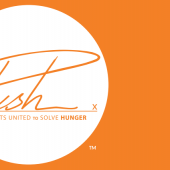Welcome to the GODAN Summit 2016 Blog Series. Each week, we will post a blog written by a participant of our Summit held in New York City on September 15-16. This week's blog is written by two presenter from the University of Illinois at Urbana-Champaign and the National Center for Supercomputing Applications (NCSA). Dr. Amy Marshall-Colón, an assistant professor of plant biology and co-principal investigator for Crops in silico, and AJ Christensen, a visualization programmer for NCSA's Advanced Visualization Lab.
Solving the impending global food crisis will require diverse efforts. One of these efforts is Crops in silico, which aims to join together disparate crop models at different spatial and temporal scales with climate and agriculture data from around the world. The success of this effort will depend in large part on the open access and sharing of data from around the globe. Currently, more than 300 different groups are working toward this goal via the Global Open Data for Agriculture and Nutrition (GODAN) project. The group held its first US summit in New York in September.
The University of Illinois at Urbana-Champaign and the National Center for Supercomputing Applications (NCSA) sent two presenters to the plenary session of the GODAN Summit to share their insights from the project: AJ Christensen and Dr. Amy Marshall-Colón.
Over the past few decades, staple crop yield improvement has largely relied on intensive farming methods, in which more plants are grown on smaller areas of land by increasing inputs such as inorganic fertilizers and pest control methods. This strategy will not get yields to where they need to be by 2050 (a 70 to 100 percent increase in food production), but by exploring creative technologies for improving plant features, such as photosynthesis and resource use efficiency, we can meet the food crisis head-on.
"In silico" means to recreate something physical in a computer. Thus, in Crops in silico, we are integrating 3D reconstructions of plants with up-to-date weather information and other data to construct more realistic models. For example, AJ, Dr. Venkat Srinivasan, and Dr. Steve Long are using this approach to simulate how crop canopies grow and find ways to maximize the amount of sunlight a plant can take in, thus optimizing photosynthetic efficiency. Meanwhile, Amy's group and Dr. Diwakar Shukla’s group are integrating models of protein structure and function with gene expression to understand and optimize nitrogen (fertilizer) uptake dynamics.
By joining together various sources of data—often with supercomputing and scientific visualization playing a key role—hunger-solving solutions can be created. This is the message we went to the GODAN summit with, talking to a crowd of international research and policy professionals, as well as influencers attending the UN General Assembly.
Crops in silico isn't the first project to adopt open data, visualization, and integrative solutions, black hole modelers, for instance, have been at it for years. When we started-out, we went to them to learn ideas how to develop a tailored solution for Crops in silico. Interestingly, much of what we have learned about using advanced visualization of big data can contribute to the GODAN project effort. Below, we unpack "scientific visualization" and "open data" laying out why they're an important component toward solving world hunger.
VISUALIZATION HELPS TELL A STORY, REVEALS NEW INSIGHT
Scientific visualization, that is, making imagery from vast arrays of numbers, is a powerful method for providing insight and helping scientists intuitively understand their data, find errors in their models, and discover phenomena they may not have been looking for. Using the multi-dimensional power of imagery, visualization experts at the NCSA use color, size, shape, and motion to make complex concepts intuitive.
Visualizations can also be used to tell a story. These are not Hollywood images, but by packaging cinematic high-resolution data-driven imagery with a narrative, a score, and a celebrity narrator, researchers can distribute these stories to immersive theaters in science centers across the world. These films play for 10 or more years, reaching millions of people. Millions of children are inspired every year by seeing real science, and they grow up to become the people making the science.
OPEN DATA: WE'RE STILL MISSING KEY CROP DATA FROM COUNTRIES AROUND THE WORLD
With Crops in silico, we are integrating models of plant cells, leaves, roots, and ecosystems to create a virtual crop. We can then test how this crop will respond to multiple climate scenarios. These model outputs will direct our research efforts toward breeding varieties with higher yield and better resource use efficiency, despite the environmental challenges they will face.
We are also taking advantage of 3D visualization of the model outputs to make observations of how a crop will perform under a climate never before experienced. With advanced visualization we can see things in the data that we would have missed by just looking at numbers in graphs and tables.
Our models are only as good as the data that goes into them. These models can be improved by including agriculture data from around the world. However, we are missing data from many of the countries that could benefit the most from our model predictions. This is why open access to data is so important to our future food security.
Talking about these areas of research with the other experts and agencies attending the GODAN Summit started many important discussions. If you would like to be part of the conversation on how the NCSA and the University of Illinois are working on global food security and advanced data techniques, contact Austin Keating at akkeati2@illinois.edu.






